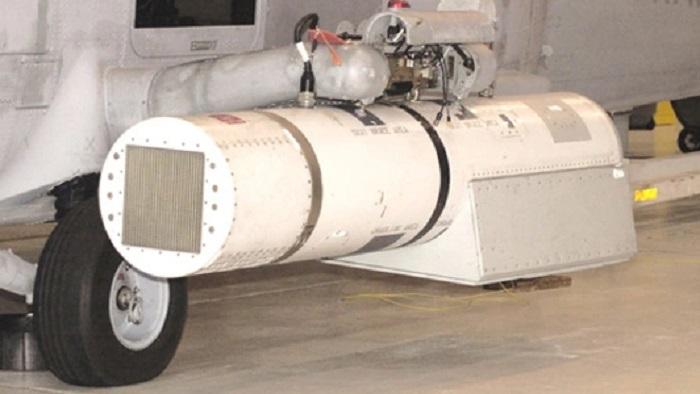Northrop Grumman Aeronautics Systems, Melbourne, Florida, is awarded a $26,081,921 firm-fixed-price, cost-plus-fixed-fee, and cost-only contract for safety, logistics, engineering, and depot services in support of AN/AES-1
Airborne Laser Mine Detection System (ALMDS). This contract includes options which, if exercised, would bring the cumulative value of this contract to $95,925,337. Work will be performed in Melbourne, Florida, and is expected to be completed by March 2023. Fiscal 2022 operation and maintenance funds in the amount of $400,000 will be obligated at time of award and will expire at the end of the current fiscal year. If all options are exercised, work will continue through March 2029. The U.S. Naval Sea Systems Command, Washington, D.C., is the contracting activity.
The AN/AES-1 ALMDS will be among the initial airborne OMCM systems fielded. The mission of ALMDS is to detect, classify and localize floating and near-surface moored mines. The ALMDS will be integrated into the MH-60S helicopter to provide a rapid wide-area reconnaissance and assessment of mine threats in littoral zones, confined straits, choke points and amphibious objective areas for Carrier and Expeditionary Strike Groups (CSG/ESG). ALMDS will be embarked as part of the mine countermeasures (MCM) mission package on the new Littoral Combat Ship (LCS). ALMDS provides rapid wide-area reconnaissance and assessment of mine threats in sea lanes, littoral zones, confined straits, choke points and amphibious areas of operations.

Airborne Laser Mine Detection System (ALMDS)
In terms of availability, variety, cost-effectiveness, ease of deployment and potential impact on joint expeditionary warfare; mines are perhaps the most attractive weapons available to prevent U.S. naval forces from achieving sea control and power projection ashore. To meet future requirements for high-tempo operations as part of a joint war fighting campaign, the naval services are undertaking a transformation in mine warfare. It is based on the development of new organic mine countermeasure (OMCM) systems that will allow naval forces to maneuver in mined waters without an operational pause.
The ALMDS uses pulsed laser light and streak tube receivers housed in an external equipment pod to image the entire near-surface volume potentially containing mines. ALMDS is capable of day or night operations without stopping to stream out or recover equipment and without towing any equipment in the water. With unteathered operations, it can attain high area search rates. ALMDS also provides accurate target geo-location to support follow on neutralization of the detected mines. The ALMDS pod is mechanically attached to the MH-60S with a standard Bomb Rack Unit 14 (BRU-14) mount and electrically via a primary and auxiliary umbilical cable to the operator console. Data is stored on a mass memory unit for post mission analysis. The operator’s consol is common to all MH-60S AMCM systems.
